Ice cream, a beloved frozen treat enjoyed by people worldwide, has a fascinating history that stretches back thousands of years. The earliest traces of ice cream can be traced back to around 550 BC in Persia, where ice houses and pools were utilized to serve and produce delectable delights like faloodeh and sorbets.
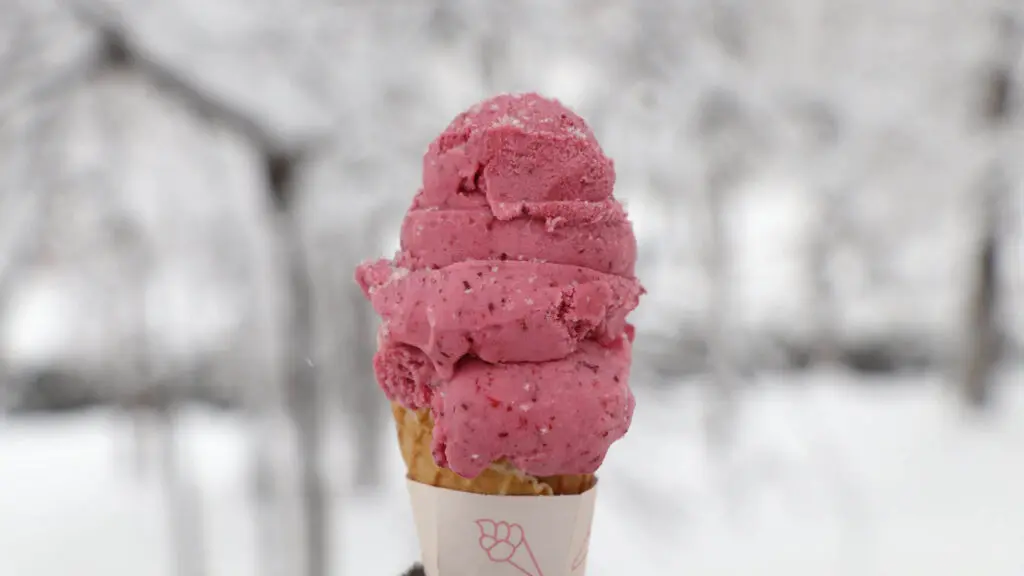
Surprisingly, despite Iceland’s name evoking images of icy landscapes and its year-round chilly climate, the tradition of Icelanders indulging in ice cream didn’t emerge until the 1920s. Join us as we delve into the intriguing journey of ice cream in Iceland, exploring the cultural nuances and flavors that have made it a cherished part of Icelandic culinary heritage.
Chapters:
Ice Collection From The Pond
The Rise of Milk Consumption in Reykjavik
The Ice Cream Wheels Started Turning in the 1930s
Ice Cream Could Only be Sold in Milk Shops
Reykjavik Changes During World War II
Import Restrictions Made Life Difficult
Dairy Queen Opens in 1954
Ísbíltúr – Ice Cream Car Ride
The Best Ice Cream Parlours in Reykjavik
Ice Collection From The Pond
Icelanders first began to utilise ice in a commercial sense when they built ice houses. Ice houses were built next to the Pond (Tjörnin) in downtown Reykjavik at the end of the 19th century. Ice was collected from the Pond, which provided many with jobs. The houses were originally intended to store bait for fishermen but soon became necessary for storing food for townspeople and providing ice for trawlers, which sailed directly to foreign markets with chilled fish.
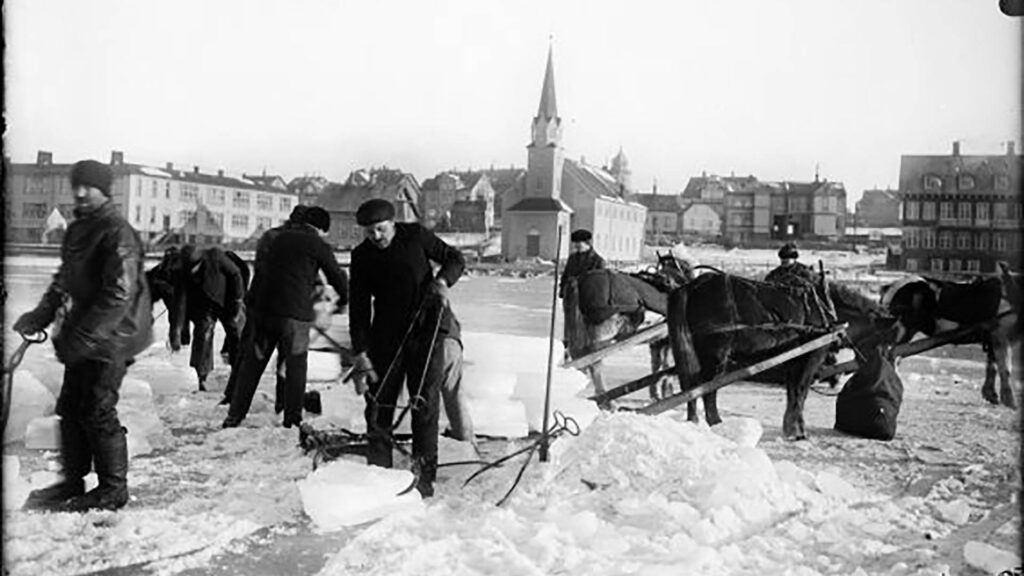
During the winter of 1919 and 1920, an impressive amount of approximately 11,000 cubic meters of ice was harvested from The Pond. This abundant ice served multiple purposes, including storing it in ice houses throughout the city and using it to preserve freshly caught fish destined for sailings to Britain. The revenue generated from this icy enterprise provided a welcomed income for the Reykjavík City Treasury.
Initially, the ice from The Pond was freely available to those in need. However, as demand grew, regulations were implemented, requiring individuals to report the quantity of ice they took. Subsequently, a dedicated ice inspector was hired to oversee the collection process. An entry in the town accounts dating back to 1915 notes the positive impact of this change, revealing that a total of 3,504 cubic meters of ice were sold, generating a sum of ISK 1,226.40.
This newfound system not only ensured proper management of the ice resources but also demonstrated the practical value it held for the community. The monetary returns reflected the increasing demand for ice and its significance as a vital resource for various purposes in Reykjavik during that era.
It should be noted that this ice was not in any way suitable for consumption, as Reykjavik’s sewage flowed freely into the Pond at the time.
The Rise of Milk Consumption in Reykjavik
Milk has played a significant role in the diet of Reykjavik residents, and its consumption has seen remarkable growth since the turn of the 20th century.
At the beginning of the century, selling milk on the streets of Reykjavik was a casual affair with no official monitoring. Vendors could even sell a single draught of milk from a cup, showcasing the simplicity of the early milk trade. However, as time passed, the handling and sale of milk needed regulation to ensure quality and safety standards.
The challenging times of World War I brought about a severe milk shortage in Reykjavík. The city struggled to meet the demand, leaving its residents longing for this essential staple. However, as the war ended, increased production and improved transportation methods gradually alleviated the situation. By 1930, milk production had surpassed the city’s demand, resulting in a surplus.
Competition among dairy producers in the market sparked the diversification of dairy products. Traditional Icelandic milk-curd skyr, known for its unique flavor and texture, became an integral part of the daily diet of Reykjavík residents. The creamy goodness of skyr offered a delightful addition to their meals and snacks, satisfying their taste buds and nutritional needs.
Milk Co-Ops Are Established
While consumer groups were not as widespread in Iceland as in other countries, urban centers like Reykjavík saw the emergence of associations that advocated for consumer rights. These groups, comprising both workers and housewives, focused on securing lower prices and improved availability of goods. Co-operative purchasing organizations were established, allowing members to buy goods in bulk at cost prices. These initiatives empowered the community and ensured fair access to essential commodities.
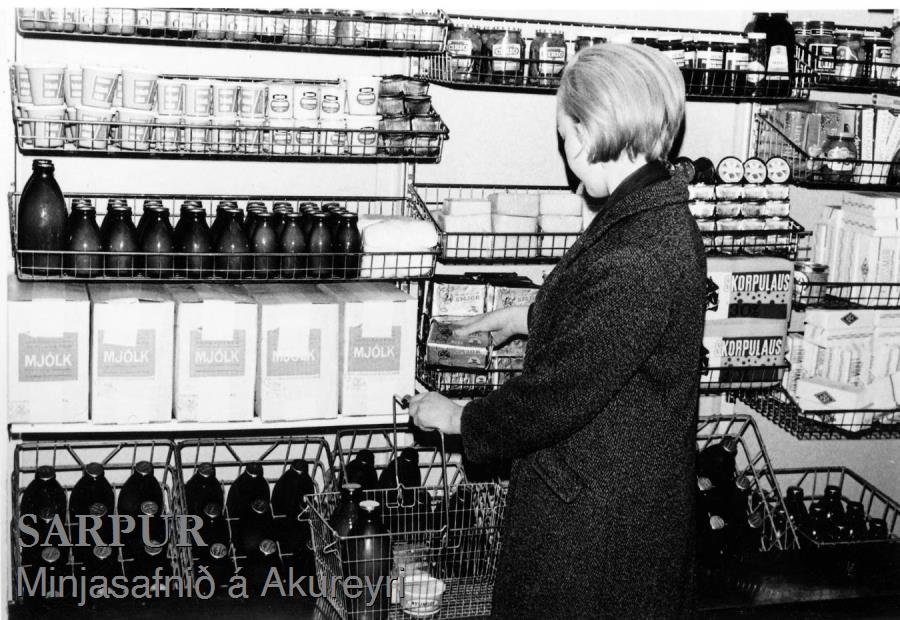
During economic hardship, such as the Great Depression, these associations played a crucial role in defending consumer interests. In Reykjavík, the Housewives’ Association rose to prominence, becoming a vocal voice against unfavorable legislation. In one notable instance, they protested against new laws governing milk sales, threatening free market competition. Through their efforts, the Housewives’ Association fought to protect the rights of consumers and maintain a fair marketplace for all.
Once a humble beverage, milk had become a symbol of resilience and nourishment for the people of Reykjavík. Its steady rise in popularity provided essential nutrition and spurred the growth of the dairy industry.
The Ice Cream Wheels Started Turning in the 1930s
Ice cream has enjoyed popularity in southern Europe since the 18th century and in Britain since the mid-19th century. Still, it was not until the 1920s that a German man’s perfected ice cream machine made commercial production of ice cream possible. It took Icelanders only a few years to jump on this new trend. In the early 1930s, the Mjólkurfélag Reykjavíkur, or Reykjavik’s Dairy, began selling ice cream.
At a 1932 industry show in Reykjavik, Iceland’s biggest companies showed what they had on offer and new and exciting products. One of the items the Mjólkurfélag Reykjavíkur (Reykjavik’s Dairy) showed was ice cream. A year before, they advertised Iceland’s best and cheapest ice cream.
“A specialist has manufactured it at our dairy, which is equipped with all the newest machines and tools to make ice cream – where there are good guests, you need good ice cream.”
Morgunblaðið, April 30, 1931
A Danish baker also advertised ice cream for sale in his bakery in Bergstaðastræti in 1928.
Ice Cream Could Only be Sold in Milk Shops
And not everyone felt it was a nice thing to see people eat. Hannes on the corner (or so his by-line was written) wrote in the newspaper Alþýðublaðið in 1939:
“The so-called ice cream is widely eaten and sold here in Reykjavík. Sometimes it’s rather disgusting to see people licking this “food” in the city dust – on streets and intersections.”
Alþýðublaðið, July 24, 1939
The reason for this intro was a new regulation the Reykjavik city council had approved regarding the manufacturing of ice cream:
- 1. All ice cream sold for consumption must be ice cream and have at least 10% fat.
- 2. Cream or milk used in the “ice cream” must be pasteurized.
- 3. All equipment and materials used for production must meet the strictest hygiene requirements cf. Article 11 regulation on the preparation and distribution of food, etc. Only pure salt and ice prepared from normal drinking water should be used for freezing.
- 4. The production’s premises complies with the provisions of the above-mentioned regulatory article on the preparation and distribution of food, etc.
- 5. Staff must be clean and healthy according to a medical certificate.
- 6. The sale of ice cream shall only be allowed from milk and bread shops. In approved restaurants, however, ice cream can also be sold for consumption there. However, the health committee can grant an exemption to others if they have previously produced and sold ice cream, as long as they meet the set conditions. The health committee can also allow special ice cream shops for emergency supplies on special occasions under the same conditions as above.
- 7. The Health Committee decides in each case whether the necessary conditions exist to produce and sell the above product. On that subject, it must, among other things, focus on the bacterial content of the product.
Reykjavik Changes During World War II
Iceland was one of the few countries in the world, if not the only one, that actually benefitted economically from the Second World War. The strategic importance of Iceland in the North Atlantic during the war led to a significant military presence, primarily centered in Reykjavík. This occupation had a profound impact on Icelandic society, particularly its economy.
While Iceland remained a non-combatant nation, the arrival of British and American forces brought about a remarkable transformation. The occupation created ample employment opportunities and injected foreign currency into the economy. The demand for Icelandic fish in European markets soared, increasing export revenues and economic prosperity.
This newfound economic prosperity led to improved living standards for the Icelandic people, especially after enduring the hardships of the Great Depression. Workers flocked from rural areas to Reykjavík, seeking better job prospects. However, this rapid urbanization also brought about a housing crisis in the city.
Import Restrictions Made Life Difficult
Although foreign trade was strictly controlled, with the rationing of essentials like coffee, sugar, and flour, ordinary people enjoyed a more varied and improved diet compared to previous years. Additionally, foreign troops brought treats from their home countries, such as sweets, fruit, and chewing gum, adding delightful moments, especially for children in Reykjavík.
Beyond economic gains, the military occupation also revitalized the social scene in Reykjavík. New cafes, restaurants, and cinemas emerged, offering enhanced entertainment options. Regular dances with live music became popular, enlivening the evenings and fostering a sense of community.
Despite its challenges, the occupation period was undoubtedly a time of economic prosperity for Iceland. The influx of foreign forces, increased employment opportunities, and thriving exports contributed to the significant improvement in living conditions for the Icelandic people. This chapter in Iceland’s history highlights the resilience and adaptability of the nation in making the most of challenging circumstances to create a prosperous society.
Dairy Queen Opens in 1954
During the great depression and then the Second World War, the Icelandic government imposed severe import restrictions. The most famous example is probably the restrictions on fruit import. Only the government was allowed to import it, and they usually only did it before Christmas. Thus, the tradition of eating red apples and oranges for Christmas became a thing.
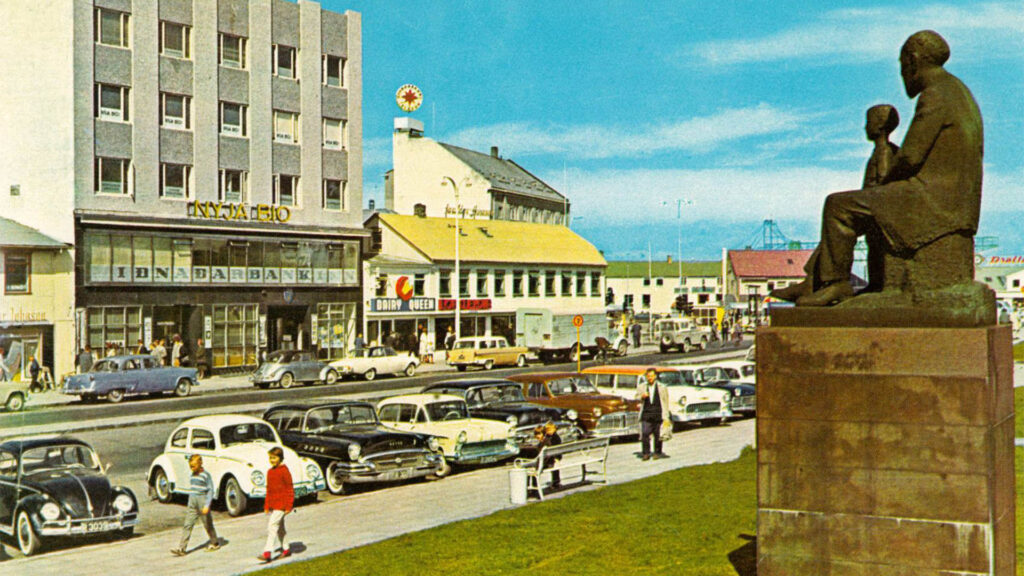
In 1954 Dairy Queen opened in Iceland. The owners received a patent for Dairy Queen ice cream in Iceland, and it was the first such trademark contract in the country. The ice cream shop was in a few locations but closed in 2001.
“A new type of ice cream, mainly made from fresh milk, has recently arrived. You can buy it in cardboard boxes and take it home, you can also buy it in cake tins, which are bigger than the ones we are used to. This ice cream, called Dairy Queen, made after an American recipe, is delicious and equal to the delicious homemade ice cream. It contains more additives than regular ice cream but is not fattening. In addition to whole milk, it contains egg whites, vitamins of various kinds, and low-fat dry matter. This ice cream is only 6% fat. Of the raw materials necessary for the production of Dairy Queen, only 15% are imported, of which 12% is sugar. The owners of this new production have received a patent for Dairy Queen ice cream in Iceland, the first and only country in Europe to produce ice cream from milk. In the United States, Dairy Queen ice cream has been produced since 1941 and is now the most popular on the market. Since 1946, the number of outlets has increased from 20 to 2500!”
Morgunblaðið, November 25, 1954
Iceland’s oldest ice cream producer, Emmessís, opened in 1960 after getting permission to import ice cream-making machines. Initially situated in the Mjólkurstöðin on Laugavegur (now the National Archives), importing ice cream machines had been discussed since the Second World War. However, due to import restrictions, permission to import the machines was granted only in 1959, and production commenced the following year.
Emmessís is still one of the largest ice cream manufacturers in Iceland.
Ísbíltúr – Ice Cream Car Ride
Icelanders have a tremendous sweet tooth. We were some of the first in the world to adopt the Danish pastry style, for example, and our love for licorice is possibly unparalleled anywhere in the world.
Many people find it odd, but different kinds of ice cream parlors open year-round in Reykjavik. Everything from the traditional soft ice to “homemade” Italian gelato. Most rest stops around the country also have an ice cream machine, so we never have to do without.
But what is “Ísbíltúr”? It’s an Icelandic tradition involving a road trip to your favorite ice cream shop with some detours. Once you arrive, everyone can choose their ice cream and toppings to reward their patience. Then, the journey continues as the driver navigates the streets of Reykjavík while enjoying their ice cream. The best part? No matter the season, there’s always room for ice cream!
In fact, Icelanders find it odd that it can be difficult to find ice cream abroad in the winter.
The Best Ice Cream Parlours in Reykjavík
Icelanders have a genuine love for ice cream, no matter what the weather may be. Among our favorite ice cream parlors are Valdís, Gaeta Gelato, Huppa, Skúbb, and Ísbúð Vesturbæjar. Each of these places has its own specialties and offerings.
Valdís and Gaeta Gelato stand out for their authentic Italian gelatos and sorbets, providing a taste of Italy right here in Iceland. On the other hand, Ísbúð Vesturbæjar is known for its “olden days” ice cream, made with milk instead of cream, evoking a sense of nostalgia.
Huppa takes pride in making its own ice cream instead of relying on larger ice cream companies in Iceland. Meanwhile, Skúbb offers organic scooped ice cream and even serves breakfast bowls with Greek yogurt, muesli, and fruits.
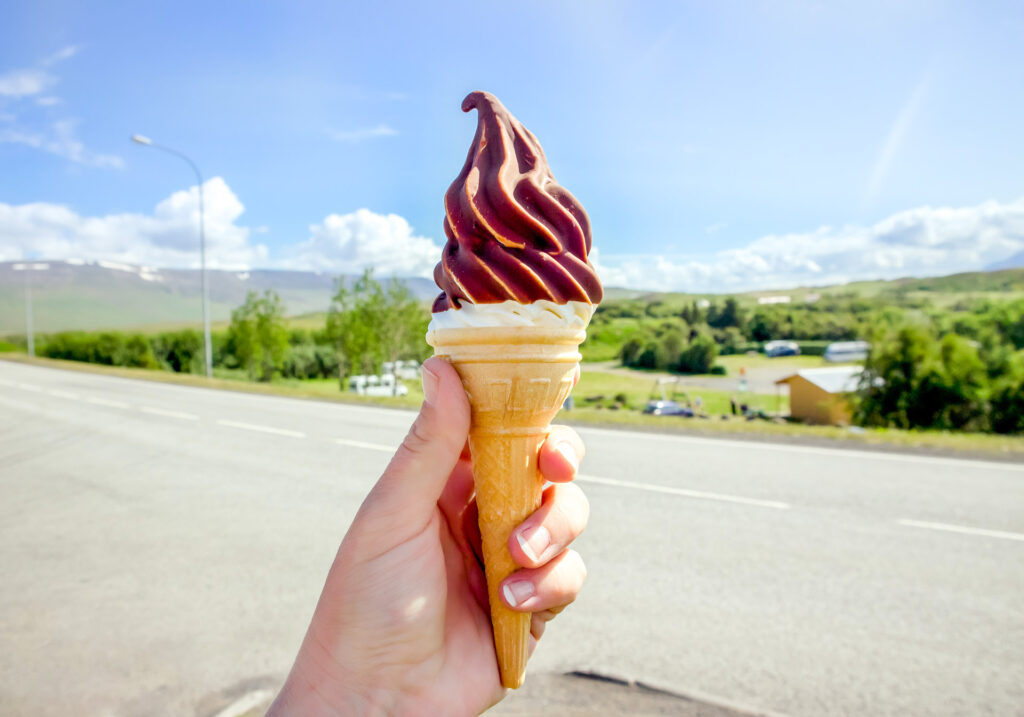
It is worth noting that the biggest ice cream manufacturers (which sell to other ice cream shops) are Emmessís and Kjörís. Emmessís’ ice cream is made from cream, while Kjörís’ is a plant-based ice cream, while not wholly vegan.
One of the more popular ice cream you can buy in Icelandic ice cream stores is the so-called “Bragðarefur”, which is a play on words. Bragðarefur means a trickster, but you can also translate it as “taste-fox”. You can buy it in three different sizes, choose which kind of ice cream you want and then three to four ingredients to add to it (chocolate, smarties, licorice, strawberries and so on), which is all blended together into a delicious thick ice cream smoothie.
You’re in for a delightful ice cream experience, no matter which parlor you choose. So, whether you prefer Italian gelato, a nostalgic milk-based treat, or homemade organic scoops, there’s something for everyone to enjoy in Iceland!
Valdís

The Italian ice cream shop opened its doors in 2013 to offer typical Italian flavors. However, the owners quickly realized that Icelanders had different preferences regarding ice cream. They began working closely with their customers to create unique variations catering to local tastes. Surprisingly, two of the most popular flavors, Tyrkis peber and salted nuts and caramel, were actually suggested by customers themselves.
Since its opening, the shop has successfully crafted over 400 different ice cream flavors, and they continue to innovate and introduce new creations regularly. Some of the more unconventional flavors they have experimented with include beer ice cream, lavender ice cream, and even curry ice cream with coconut and chili.
In addition to its diverse range of options, the shop always ensures a great selection of vegan sorbets. These sorbets primarily consist of fruit flavors since their customers have expressed the most interest in that. However, you may occasionally come across ice cream made with coconut or almond milk, providing other choices for those with specific dietary preferences.
- Opening hours: Every day 11:30 – 23:00
Grandagarður 21 and Laugavegur 42
101 Reykjavik - Opening hours: Monday – Thursday 16:00 – 22:00, Friday 14:00 – 22:00, Saturday – Sunday 12:00 – 22:00
Austurvegur 4,
800 Hvolsvöllur
Gaeta
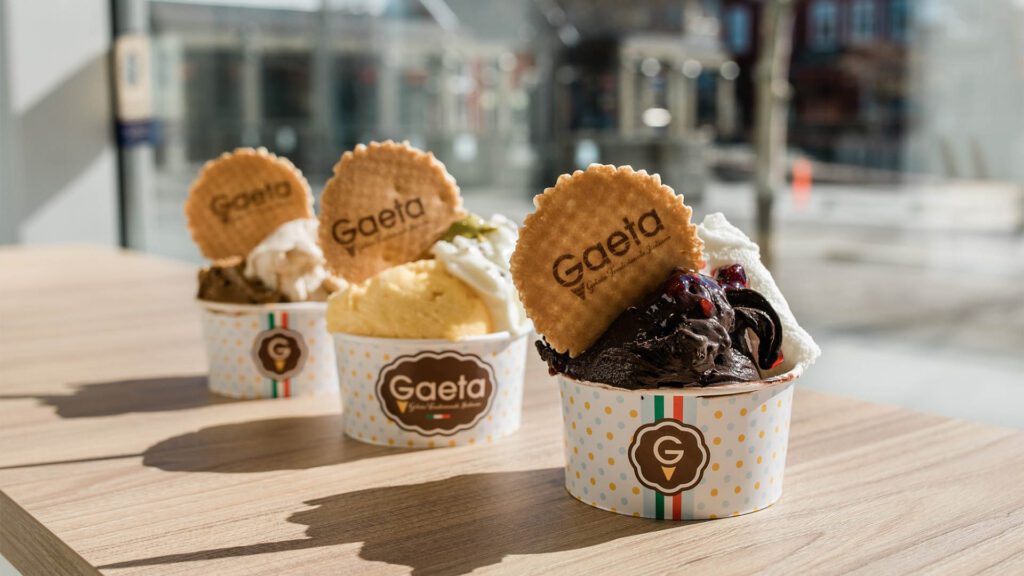
A talented group of gelato artisans from Italy embarked on a mission to bring their craft to Reykjavik. With over 25 years of experience, they opened their charming gelato parlor in the city’s heart, offering a delightful selection of homemade Italian gelato and sorbets. Alongside these frozen treats, they also tempt visitors with a range of Italian delicacies, including tiramisu, gelato cakes, Sicilian cannoli, hot chocolate, and the rich aroma of Lavazza coffee.
Dedicated to preserving the authentic taste of Italian gelato, they use only the finest Icelandic ingredients. Locally sourced milk, cream, and skyr are skillfully blended with traditional Italian flavors like Sicilian pistachio and Piemonte hazelnut, resulting in an exceptional gelato experience that captivates the palate.
Gelato sets itself apart from ice cream with its fresh and preservative-free approach. While ice cream tends to be richer and fluffier due to its higher cream content, gelato boasts a silkier, denser texture. This is achieved through a slower churning process that minimizes the air incorporated into the mixture. Served with a unique spade-like spoon, gelato invites you to savor its smooth and velvety indulgence.
Its natural essence distinguishes gelato, allowing the true flavors to shine through. Each scoop becomes a moment of pure pleasure as you discover the intensity and authenticity that make gelato a cherished treat for all.
- Opening Hours: Every day 12:00 – 23:00
Aðalstræti 6,
101 Reykjavik - Opening Hours: Every day 10:00 – 22:00
Mathöll Hlemmur,
Laugavegur 107,
105 Reykjavik - Opening hours: Every day 12:00 – 21:00
Mathöll Höfða,
Bíldshöfði 9,
110 Reykjavík
Huppa
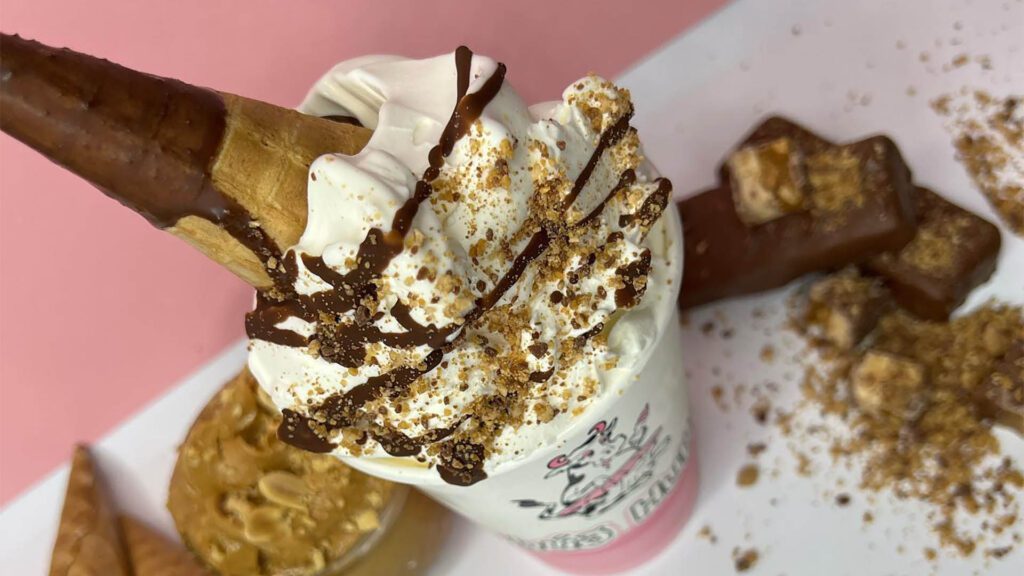
Ísbúð Huppu, owned by two friendly couples from Selfoss, Eygló Rún Karlsdóttir and Sverrir Rúnarsson, as well as Telma Finnsdóttir and Gunnar Már, started with humble beginnings. Named after a beloved milk cow from one of the founders’ family farms, Huppa’s first ice cream shop opened on July 24, 2013, at Eyrarvegur 3 in Selfoss. Due to its success and growing demand, the shop was later relocated to a larger building across the street at Eyrarvegur 2, where it thrives today. Since then, Huppa has expanded to open multiple other stores, bringing their delicious ice cream to more people.
- Spöngin
Opening hours: Every day 12:00 – 23:00
Spönginni 16,
112 Reykjavík - Álfheimar
Opening hours: Every day 12:00 – 23:00
Álfheimar 4-6,
104 Reykjavík - Garðabær
Opening hours: Every day 12:00 – 23:00
Garðatorg 6B,
210 Garðabær - Hafnarfjörður
Opening hours: Every day 12:00 – 23:00
Reykjavíkurvegur 72,
220 Hafnarfjörður - Seltjarnarnes
Opening hours: Every day 12:00 – 23:00
Austurströnd 7,
170 Seltjarnarnes - Borgarnes
Opening hours: Every day 12:00 – 23:00
Digranesgata 4,
310 Borgarnes - Selfoss
Opening hours: Every day 12:00 – 23:00
Eyrarvegur 2,
800 Selfoss - Reykjanesbær
Opening hours: Every day 12:00 – 23:00
Hafnargata 90A,
230 Reykjanesbær - Mosfellsbær
Opening hours: Every day 12:00 – 23:00
Háholt 13
270 Mosfellsbær
Skúbb Ísgerð
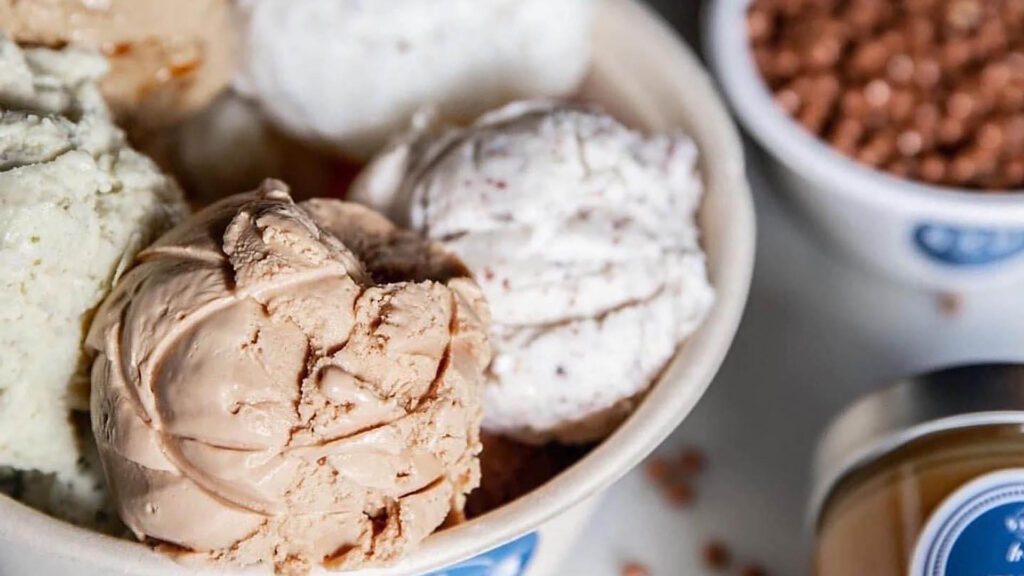
At Skúbb, their focus is on creating ice cream from scratch using the best available ingredients while prioritizing organic options whenever feasible. They believe in making ice cream by hand, ensuring high quality without using additives. For their milk, they partner with Bíó Bú, a local dairy farm known for its organic practices. Similarly, all the other products they offer align with their philosophy by being locally made. Skúbb is dedicated to providing a pure and delicious ice cream experience while supporting sustainable and local sourcing.
Skúbb is an Icelandic version of “scoop.” Some people love Skúbb ice cream so much they’ve travelled all the way from Hafnarfjörður to get a scoop.
Opening Hours: Weedays 14:00 – 23:00, Weekends 12:00 – 23:00
Laugarásvegur 1
104 Reykjavik
Ísbúð Vesturbæjar
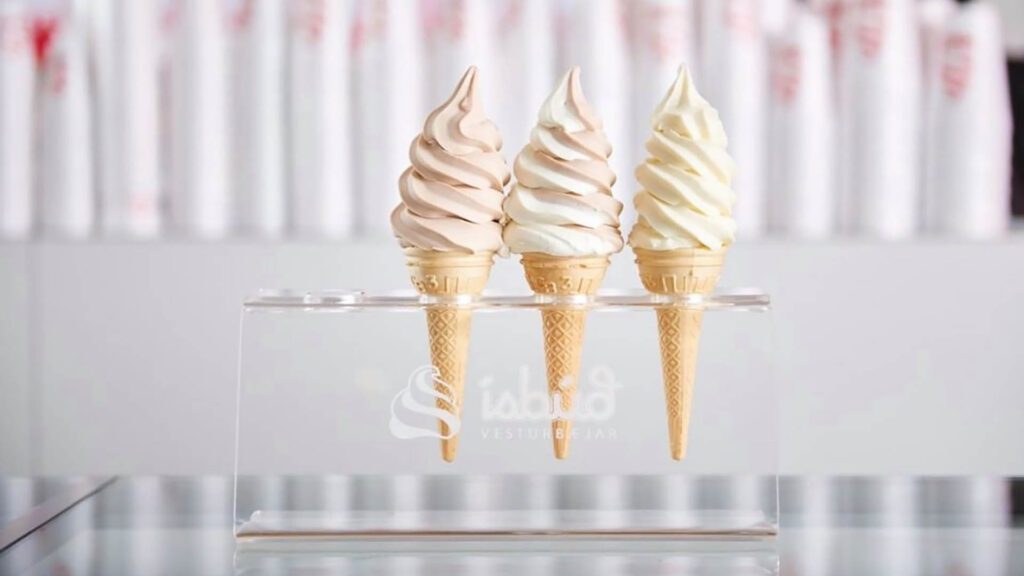
At Ísbúð Vesturbæjar, the old-fashioned ice cream holds a special place in the hearts of customers. Made with fresh, high-quality milk, it embodies a nostalgic flavor that keeps people returning for more. This particular ice cream pays homage to the traditional ice cream that was sold at Ísbúð Vesturbæjar by Hagamelur for many years.
In addition to their beloved old-fashioned ice cream, Ísbúð Vesturbæjar offers a range of classic treats. From traditional ice cream cones to refreshing shakes, there’s something for everyone. One notable offering is the Bragðarefur, a delightful and thick ice cream smoothie infused with delicious candy pieces. And, of course, indulging in ice cream with a dip in a crispy cornett remains a timeless favorite.
Ísbúð Vesturbæjar is dedicated to serving up these classic ice cream delights, ensuring that customers can relish in the timeless flavors that bring joy and a sense of nostalgia.Ísbúð Vesturbæjar.
- Hagamelur 67 ┃ 107 Reykjavík
Opening Hours: Every day 12:00-23:30 - Grensásvegur 50┃ 108 Reykjavík
Opening Hours: Every day 12:00-23:30 - Bæjarlind 1-3 ┃ 201 Reykjavík
Opening Hours: Every day 12:00-23:30 - Fjarðargata 19 ┃ 220 Hafnarfjörður
Opening Hours: Every day 12:00-23:30 - Skipholt 50 C┃ 105 Reykjavík
Opening Hours: Every day 16:00-23:30 - Skagabraut 43 ┃ 300 Akranes
Opening Hours: Every day 12:00-23:30
Honorable mentions:
IKEA Ice Cream – The best bang for your buck,
Omnom Ice Cream – one of the fanciest ice creams,
Ísbúð Garðabæjar – The best place to get regular soft ice with a chocolate dip, as there are separate lines for shakes and bragðarefur, and soft ice.
In conclusion, ice cream in Iceland has become more than just a frozen treat; it’s a beloved cultural phenomenon that brings joy to locals and visitors alike. From traditional Icelandic flavors to innovative creations, the ice cream scene in Iceland offers a delightful journey for the taste buds. Whether you’re indulging in an “ísbíltúr” with family, savoring a scoop from a local parlor, or enjoying the creamy goodness of artisanal gelato, ice cream in Iceland is an experience that is sure to leave a lasting impression. So, the next time you find yourself in Iceland, don’t forget to treat yourself to the irresistible allure of ice cream in this enchanting land of fire and ice.








